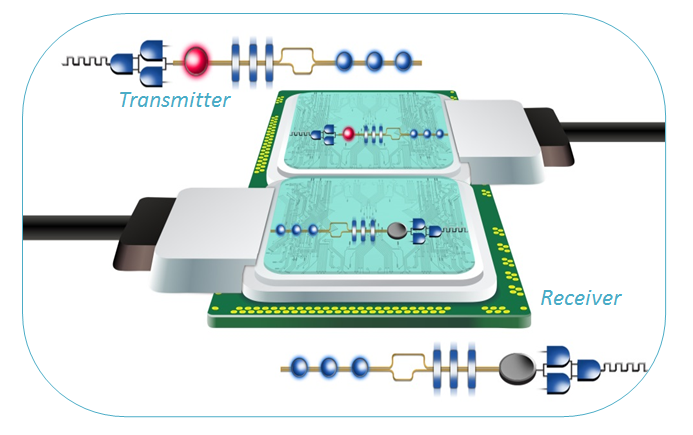Sandia Enabled Communications and Authentication Network using Quantum Key Distribution (SECANT QKD) is a Grand Challenge in Quantum Communication.
This program aims to construct chip-scale, handheld quantum transceivers that can implement DV, CV, free-space, and fiber based QKD. It also aims to demonstrate a hybrid QKD network with chip-scale transceiver nodes. The potential impact of this program could be quantum-based key generation for hybrid networks of mobile trusted nodes without a central hub. This could also be a toolbox for other applications in photonic QIP. Sandia has several unique capabilities which enable this program to operate. SECANT is composed of world-class teams in integrated photonics, quantum theory, and systems. Sandia also has state of the art MESA/CINT micro-fabrication facilities.
The ability to transmit and receive quantum-encoded messages guarantees the security of that information. Miniaturizing such ultra-secure technology to the size of a microchip literally puts the power of quantum cryptography in the palm of one’s hand – in a cell phone, in an ATM, or on a laptop, for example. T-QUAKE is capable of offering quantum information security to billions of people and, like the transistor at the advent of a nationwide telephone network, we envision the quantum key distribution transceiver as a pillar of future, guaranteed-secure online networks, medical records repositories, and banking systems. In a networked world of counterfeiters, cyber attackers, and compromised databases, this is a major advance, potentially taking us a step closer to a fraud-free world.

Figure 1. The overarching goal of the SECANT QKD program is to build a chip-scale transceiver capable of operating in a QKD network.